Thingiverse
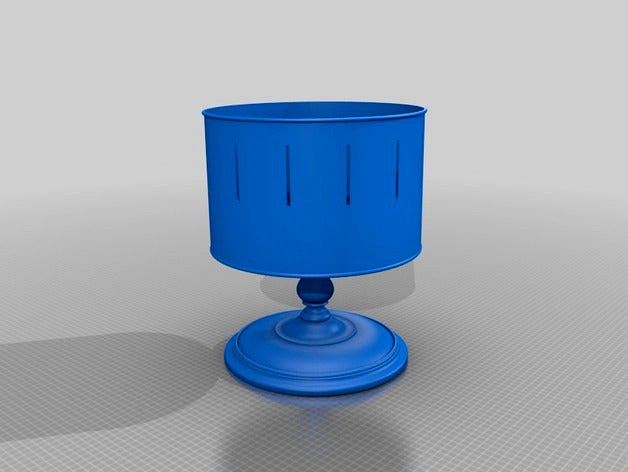
19th Century Zoetrope/Zootrope du 19ième siècle by IngeniumCanada
by Thingiverse
Last crawled date: 3 years ago
(Le français suit l'anglais)
The zoetrope is one of the earliest animation devices. Invented in 1834 by William George Horner, it was originally named the Daedalum or “wheel of the devil”. It was not very popular until around 1867, when it was rediscovered and patented by William F. Lincoln in the U.S., and Milton Bradley in England. It was Lincoln who gave it the name “zoetrope” or “wheel of life”.
Manufactured in London, England in the 19th century, the base of the zoetrope that you see here was built out of wood, while the drum was built out of metal, possibly tin. The drum was painted black on the outside and white on the inside. Zoetrope strips would be placed inside of the drum.
To find out more about this zoetrope, please visit:https://ingeniumcanada.org/ingenium/collection-research/collection-item.php?id=1987.0280.001
Note: The original 3D scan of the artifact is named “Zoetrope-artifact.stl“. It is meant to be viewed in a virtual environment using computer software. You can try printing it off, though we cannot guarantee the quality. We have modified the model into a more useable form (“Zoetrope-modified-base.stl“ and “Zoetrope-modified-stand.stl“). For educational activities that this modified model can be used in, please visit:https://ingeniumcanada.org/ingenium/museums/education/3D-zoetrope.php
Our terms of use can be found at: https://ingeniumcanada.org/ingenium/doc/content/cstmc/CSTMC%20terms%20of%20use%203D%20ENG.pdf
Le zootrope est l’un des premiers instruments d’animation. Inventé en 1834 par William George Horner, il a d’abord été appelé « daedalum » ou « roue du diable ». Il n’est devenu vraiment populaire que vers 1867, lorsque William F. Lincoln, aux États Unis, et Milton Bradley, en Angleterre, l’ont redécouvert et fait breveter. C’est Lincoln qui l’a nommé « zootrope » ou « roue de la vie ».
Fabriquée à Londres (Angleterre) au 19ème siècle, la base du zootrope que vous voyez ici était faite de bois, alors que le tambour se composait de métal, peut-être d’étain. Le tambour était peint en noir à l’extérieur et en blanc à l’intérieur. Les bandes du zootrope étaient placées à l’intérieur du tambour.
Pour obtenir un complément d’information sur le zootrope illustré ici, visitez le sitehttps://ingeniumcanada.org/ingenium/collections-recherche/collection-point.php?id=1987.0280.001
Remarque : L’image 3D originale de l’artefact porte le nom « Zoetrope-artifact.stl ». Le zootrope est conçu pour être visualisé dans un environnement virtuel au moyen d’un logiciel. Vous pouvez tenter de l’imprimer. Toutefois, nous ne pouvons garantir la qualité de l’impression. Nous avons modifié le modèle afin de le rendre plus facile à utiliser (« Zoetrope-modified-base.stl » et « Zoetrope-modified-stand.stl »). Pour prendre connaissance des activités éducatives permettant l’utilisation de ce modèle, visitez le sitehttps://ingeniumcanada.org/ingenium/musees/educatif/zootrope-3D.php
Vous trouverez nos conditions d’utilisation à l’adresse https://ingeniumcanada.org/ingenium/doc/content/cstmc/CSTMC%20terms%20of%20use%203D%20FR.pdf
The zoetrope is one of the earliest animation devices. Invented in 1834 by William George Horner, it was originally named the Daedalum or “wheel of the devil”. It was not very popular until around 1867, when it was rediscovered and patented by William F. Lincoln in the U.S., and Milton Bradley in England. It was Lincoln who gave it the name “zoetrope” or “wheel of life”.
Manufactured in London, England in the 19th century, the base of the zoetrope that you see here was built out of wood, while the drum was built out of metal, possibly tin. The drum was painted black on the outside and white on the inside. Zoetrope strips would be placed inside of the drum.
To find out more about this zoetrope, please visit:https://ingeniumcanada.org/ingenium/collection-research/collection-item.php?id=1987.0280.001
Note: The original 3D scan of the artifact is named “Zoetrope-artifact.stl“. It is meant to be viewed in a virtual environment using computer software. You can try printing it off, though we cannot guarantee the quality. We have modified the model into a more useable form (“Zoetrope-modified-base.stl“ and “Zoetrope-modified-stand.stl“). For educational activities that this modified model can be used in, please visit:https://ingeniumcanada.org/ingenium/museums/education/3D-zoetrope.php
Our terms of use can be found at: https://ingeniumcanada.org/ingenium/doc/content/cstmc/CSTMC%20terms%20of%20use%203D%20ENG.pdf
Le zootrope est l’un des premiers instruments d’animation. Inventé en 1834 par William George Horner, il a d’abord été appelé « daedalum » ou « roue du diable ». Il n’est devenu vraiment populaire que vers 1867, lorsque William F. Lincoln, aux États Unis, et Milton Bradley, en Angleterre, l’ont redécouvert et fait breveter. C’est Lincoln qui l’a nommé « zootrope » ou « roue de la vie ».
Fabriquée à Londres (Angleterre) au 19ème siècle, la base du zootrope que vous voyez ici était faite de bois, alors que le tambour se composait de métal, peut-être d’étain. Le tambour était peint en noir à l’extérieur et en blanc à l’intérieur. Les bandes du zootrope étaient placées à l’intérieur du tambour.
Pour obtenir un complément d’information sur le zootrope illustré ici, visitez le sitehttps://ingeniumcanada.org/ingenium/collections-recherche/collection-point.php?id=1987.0280.001
Remarque : L’image 3D originale de l’artefact porte le nom « Zoetrope-artifact.stl ». Le zootrope est conçu pour être visualisé dans un environnement virtuel au moyen d’un logiciel. Vous pouvez tenter de l’imprimer. Toutefois, nous ne pouvons garantir la qualité de l’impression. Nous avons modifié le modèle afin de le rendre plus facile à utiliser (« Zoetrope-modified-base.stl » et « Zoetrope-modified-stand.stl »). Pour prendre connaissance des activités éducatives permettant l’utilisation de ce modèle, visitez le sitehttps://ingeniumcanada.org/ingenium/musees/educatif/zootrope-3D.php
Vous trouverez nos conditions d’utilisation à l’adresse https://ingeniumcanada.org/ingenium/doc/content/cstmc/CSTMC%20terms%20of%20use%203D%20FR.pdf
Similar models
thingiverse
free

Sopwith Triplane - First World War Airplane / Triplan Sopwith - Avion de la Première Guerre mondiale by IngeniumCanada
...conditions d’utilisation à l’adresse https://ingeniumcanada.org/ingenium/doc/content/cstmc/cstmc%20terms%20of%20use%203d%20fr.pdf
thingiverse
free

Nieuport 12 - First World War Airplane / Avion de la Première Guerre mondiale by IngeniumCanada
...conditions d’utilisation à l’adresse https://ingeniumcanada.org/ingenium/doc/content/cstmc/cstmc%20terms%20of%20use%203d%20fr.pdf
thingiverse
free

Royal Aircraft Factory B.E. 2c - First World War Airplane / Avion B.E. 2c de Royal Aircraft Factory - Avion de la Première Guerre mondiale by IngeniumCanada
...conditions d’utilisation à l’adresse https://ingeniumcanada.org/ingenium/doc/content/cstmc/cstmc%20terms%20of%20use%203d%20fr.pdf
thingiverse
free

Bristol F.2B - First World War Airplane / Avion de la Première Guerre mondiale by IngeniumCanada
...conditions d’utilisation à l’adresse https://ingeniumcanada.org/ingenium/doc/content/cstmc/cstmc%20terms%20of%20use%203d%20fr.pdf
thingiverse
free

A.E.G. G.IV - First World War Airplane / Avion de la Première Guerre mondiale by IngeniumCanada
...conditions d’utilisation à l’adresse https://ingeniumcanada.org/ingenium/doc/content/cstmc/cstmc%20terms%20of%20use%203d%20fr.pdf
thingiverse
free

Sopwith Pup - First World War Airplane / Avion de la Première Guerre mondiale by IngeniumCanada
...conditions d’utilisation à l’adresse https://ingeniumcanada.org/ingenium/doc/content/cstmc/cstmc%20terms%20of%20use%203d%20fr.pdf
thingiverse
free

19th Century Telegraph Key / Manipulateur télégraphique du 19ième siècle by IngeniumCanada
...conditions d’utilisation à l’adresse https://ingeniumcanada.org/ingenium/doc/content/cstmc/cstmc%20terms%20of%20use%203d%20fr.pdf
3dwarehouse
free

tambour
...tambour
3dwarehouse
tambour du 18ème siècle position fixe et marche #army #armée #drum #napoleon #tambour
grabcad
free

Tambour de queue
...tambour de queue
grabcad
tambour de queue avec moyeu et clavette à talon
3dwarehouse
free

Moulin dit du Roy Domme
...e que les habitants devaient payer un droit au seigneur du lieu. restauré le moulin à vent de domme ne comporte pas de mécanisme.
Zootrope
thingiverse
free

Zootrope du 19ième siècle – Activité éducative by IngeniumCanada
...rg/fr/educatif/ressources-pedagogiques-3d/zootrope-3d
nous vous présentons nos excuses pour tout ennui que cela peut avoir causé.
thingiverse
free

Zootrope variation by WillemvD
...s ready for improvement. that was a quick and dirty design, just to get things moving. the cap with moving cylinders is optional.
3dwarehouse
free

Zootrop
...t depends on your graphic card to perfectly see it . need sketchyphysics #animation #cinema #horse #race #sketchyphysics #zootrop
19Ième
thingiverse
free

Zootrope du 19ième siècle – Activité éducative by IngeniumCanada
...rg/fr/educatif/ressources-pedagogiques-3d/zootrope-3d
nous vous présentons nos excuses pour tout ennui que cela peut avoir causé.
thingiverse
free

Manipulateur télégraphique du 19ième siècle – Activité éducative by IngeniumCanada
...sources-pedagogiques-3d/manipulateur-telegraphique-3d
nous vous présentons nos excuses pour tout ennui que cela peut avoir causé.
thingiverse
free

19th Century Telegraph Key / Manipulateur télégraphique du 19ième siècle by IngeniumCanada
...conditions d’utilisation à l’adresse https://ingeniumcanada.org/ingenium/doc/content/cstmc/cstmc%20terms%20of%20use%203d%20fr.pdf
thingiverse
free

Machine électrostatique de Wimshurst - 1882 by Electronic_Delirium
...à fabriquer soi-même! [1/2] un incroyable appareil scientifique du 19ième siècle à fabriquer soi-même ! episode 1 et c’est...
3dwarehouse
free

Bâtiment situé Bruxelles, Belgique
...'modernisée' en style néo-classique à la première moitié du 19ième ...
3dwarehouse
free

Le Cygne
...arbeiterverein (parti ouvrier allemand) dont certains membres avaient été exilés. (karl marx et friedrich engels y participèrent.
3dwarehouse
free

Redoute de sablanceaux
...rochelle. le bâtiment sera restauré au 18ième siècle et 19ième siècle, puis désarmé définitivement en 1827. durant la seconde...
3dwarehouse
free

Koninklijke Vlaamse Schouwburg (KVS) (Théatre Royal Flamand)
...et 1781. architecte: r. nivois. a la moitié du 19ième siècle, le bâtiment devient un arsenal. le bâtiment est...
Ingeniumcanada
thingiverse
free

19th Century Zoetrope - Educational Activity by IngeniumCanada
....ingeniumcanada.org/education/3d-educational-resources/3d-zoetrope
we apologize for any inconveniences that this may have caused.
thingiverse
free

First World War Airplanes - Educational Activity by IngeniumCanada
...ingeniumcanada.org/education/3d-educational-resources/3d-aircrafts
we apologize for any inconveniences that this may have caused.
thingiverse
free

19th Century Telegraph Key - Educational Activity by IngeniumCanada
...niumcanada.org/education/3d-educational-resources/3d-telegraph-key
we apologize for any inconveniences that this may have caused.
thingiverse
free

Zootrope du 19ième siècle – Activité éducative by IngeniumCanada
...rg/fr/educatif/ressources-pedagogiques-3d/zootrope-3d
nous vous présentons nos excuses pour tout ennui que cela peut avoir causé.
thingiverse
free

Avions de la Première Guerre mondiale - Activité éducative by IngeniumCanada
....org/fr/educatif/ressources-pedagogiques-3d/avions-3d
nous vous présentons nos excuses pour tout ennui que cela peut avoir causé.
thingiverse
free

Manipulateur télégraphique du 19ième siècle – Activité éducative by IngeniumCanada
...sources-pedagogiques-3d/manipulateur-telegraphique-3d
nous vous présentons nos excuses pour tout ennui que cela peut avoir causé.
thingiverse
free

19th Century Telegraph Key / Manipulateur télégraphique du 19ième siècle by IngeniumCanada
...conditions d’utilisation à l’adresse https://ingeniumcanada.org/ingenium/doc/content/cstmc/cstmc%20terms%20of%20use%203d%20fr.pdf
thingiverse
free

Nieuport 12 - First World War Airplane / Avion de la Première Guerre mondiale by IngeniumCanada
...conditions d’utilisation à l’adresse https://ingeniumcanada.org/ingenium/doc/content/cstmc/cstmc%20terms%20of%20use%203d%20fr.pdf
thingiverse
free

Sopwith Pup - First World War Airplane / Avion de la Première Guerre mondiale by IngeniumCanada
...conditions d’utilisation à l’adresse https://ingeniumcanada.org/ingenium/doc/content/cstmc/cstmc%20terms%20of%20use%203d%20fr.pdf
Zoetrope
thingiverse
free

Zoetrope by Shoddiness
...zoetrope by shoddiness
thingiverse
simple zoetrope
i used a finishing nail in a dowel rod for the handle
thingiverse
free

Zoetrope by msraynsford
... nottinghacks cartoon club. i'll sort out some links for actual animations as soon as they are madehttp://nottinghack.org.uk/
thingiverse
free

littleBits zoetrope by littleBits
...ly from blender tutorial (http://wiki.blender.org/index.php/doc:2.4/tutorials/animation/bsod/character_animation/final_animation)
thingiverse
free

Zoetrope by Synergist
...p of a pencil and fits 11" x 1" paper strips. best printed with a dark filament or spray-painted black after printing.
thingiverse
free

Zoetrope by mrigsby
...on of the video camera to the strobe frequency of the device.
for more details go to: https://hackaday.io/project/161254-zoetrope
thingiverse
free

Zoetrope by nicholasmaoury
...dge.
link to project blog post: https://sites.lib.jmu.edu/isci104-fall2018/2018/09/12/tinkercad-design-project-megan-nic-sharon/
thingiverse
free

3D Zoetrope Character by Ugly
... different pose, on a rotating platform. the 3d zoetrope recreates the effect of looking through slits of the original zoetropes.
thingiverse
free

Zoetrope by WillemvD
...eatures/the-10-most-mind-bending-vinyl-zoetropes/
for a more sophisticated version, visithttp://www.thingiverse.com/thing:2167349
thingiverse
free

Zoetrope CD Widget by bjm123
...p://www.questacon.edu.au/outreach/programmes/questacon-smart-skills-initiative/workshops/resources/teacher-workshop-2-3d-zoetrope
thingiverse
free

Customizable Zoetrope by SamM
...ying sequentially, bringing the animation to life.
here is a gif of a zoetrope playing a gifhttp://postimage.org/image/fk9lao7jb/
Siècle
sketchfab
$4

Trone en Bois 16eme Siècle
...odel made in 3d softwares. - trone en bois 16eme siècle - buy royalty free 3d model by l'atelier 5d (@lesateliers3d_officiel)
thingiverse
free

Zootrope du 19ième siècle – Activité éducative by IngeniumCanada
...rg/fr/educatif/ressources-pedagogiques-3d/zootrope-3d
nous vous présentons nos excuses pour tout ennui que cela peut avoir causé.
thingiverse
free

Manipulateur télégraphique du 19ième siècle – Activité éducative by IngeniumCanada
...sources-pedagogiques-3d/manipulateur-telegraphique-3d
nous vous présentons nos excuses pour tout ennui que cela peut avoir causé.
sketchfab
$16

Chateau de la Bretesche Missillac
...bâtiment médiéval construit au xive siècle, reconstruit au xixe siècle et localisé sur la commune de missillac, dans le...
sketchfab
$25

église de Meuvaines
...église de meuvaines sketchfab église de meuvaines, xiième siècle calvados, france - église de meuvaines - buy royalty...
thingiverse
free

Spiromètre de Tissot by oliflo
...dans un sac de douglas (1er quart du 20e siècle. ...
sketchfab
$10

Porte gothique, Lusignan (86)
...porte gothique, lusignan (86) sketchfab porte médiévale du xve siècle située dans la ville de lusignan. - porte gothique,...
thingiverse
free

19th Century Telegraph Key / Manipulateur télégraphique du 19ième siècle by IngeniumCanada
...conditions d’utilisation à l’adresse https://ingeniumcanada.org/ingenium/doc/content/cstmc/cstmc%20terms%20of%20use%203d%20fr.pdf
sketchfab
$15

Croix de la Garde-Freinet
...un ancien village fortifié de la fin du xiième siècle perché sur un éperon rocheux et dominant le village...
19Th
3ddd
$1
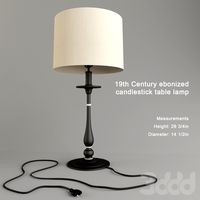
19th Century ebonized
...19th century ebonized
3ddd
19th century ebonized candlestick table lamp
measurements
height: 29 3/4in
diameter: 14 1/2in
turbosquid
$19
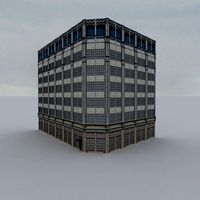
19th Century building
... available on turbo squid, the world's leading provider of digital 3d models for visualization, films, television, and games.
turbosquid
$1
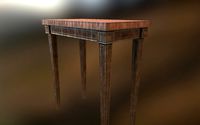
19th Century Table
... available on turbo squid, the world's leading provider of digital 3d models for visualization, films, television, and games.
design_connected
$18

French 19th c. Chaise A
...french 19th c. chaise a
designconnected
n/a french 19th c. chaise a armchairs computer generated 3d model. designed by n/a.
design_connected
$4

French 19th c. Table
...french 19th c. table
designconnected
n/a french 19th c. table coffee tables computer generated 3d model. designed by n/a.
3d_export
$25

Set of buildings of the 19th-20th century
...h century contains buildings in the entourage of the industrial revolution of the 19th-20th century, set consists of 5 buildings.
3ddd
free

19TH C. KEYHOLE METAL SQUARE
...19th c. keyhole metal square
3ddd
restoration hardware
19th c. keyhole metal square
turbosquid
$45

19th Century Bath House
...lty free 3d model 19th century bath house for download as fbx on turbosquid: 3d models for games, architecture, videos. (1682622)
turbosquid
$10

French Villa 19th Century
...y free 3d model french villa 19th century for download as stl on turbosquid: 3d models for games, architecture, videos. (1669905)
turbosquid
$17

19th C Bronze Gongs
...free 3d model 19th c bronze gongs for download as max and fbx on turbosquid: 3d models for games, architecture, videos. (1215544)
Century
3ddd
$1

Century Furniture
.../www.centuryfurniture.com/gallery/showitem.aspx?sku=639-532
century furniture dining room windowpane arm chair 639-532
3d_export
$7

mid century chair
...mid century chair
3dexport
mid-century type dining chair
turbosquid
$10

Century Chair
...free 3d model century chair for download as max, fbx, and obj on turbosquid: 3d models for games, architecture, videos. (1711388)
turbosquid
$20

Century Car
... available on turbo squid, the world's leading provider of digital 3d models for visualization, films, television, and games.
3ddd
$1

Century Furniture Saturn Chair
...century furniture saturn chair
3ddd
century furniture
century furniture saturn chair
3d_export
$65

century avenue
...century avenue
3dexport
simple rendering of the scene file
3ddd
free
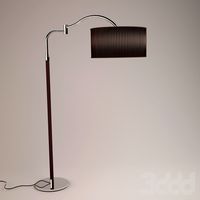
Торшер Century Terra
...ra
3ddd
century terra
модель торшера century terra делалась в archicad`е. только провод был добавлен в максе, ну и рендер конечно
3ddd
$1

Стул Century Antiques
...стул century antiques
3ddd
стул фирмы century классический с текстурами и материалами. рендерено в максе+vray.
3ddd
$1
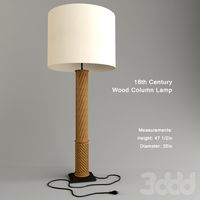
18th Century Wood
...18th century wood
3ddd
lucca antiques
18th century wood column lamp
measurements:
height: 47 1/2in
diameter: 20in
3ddd
free

Комод Century furniture
...а: century furniture
модель: chinese credenza
артикул: 609-403
ширина: 198 см
высота: 89,5 см
глубина: 59 см
в архиве 3dsmax 2010
